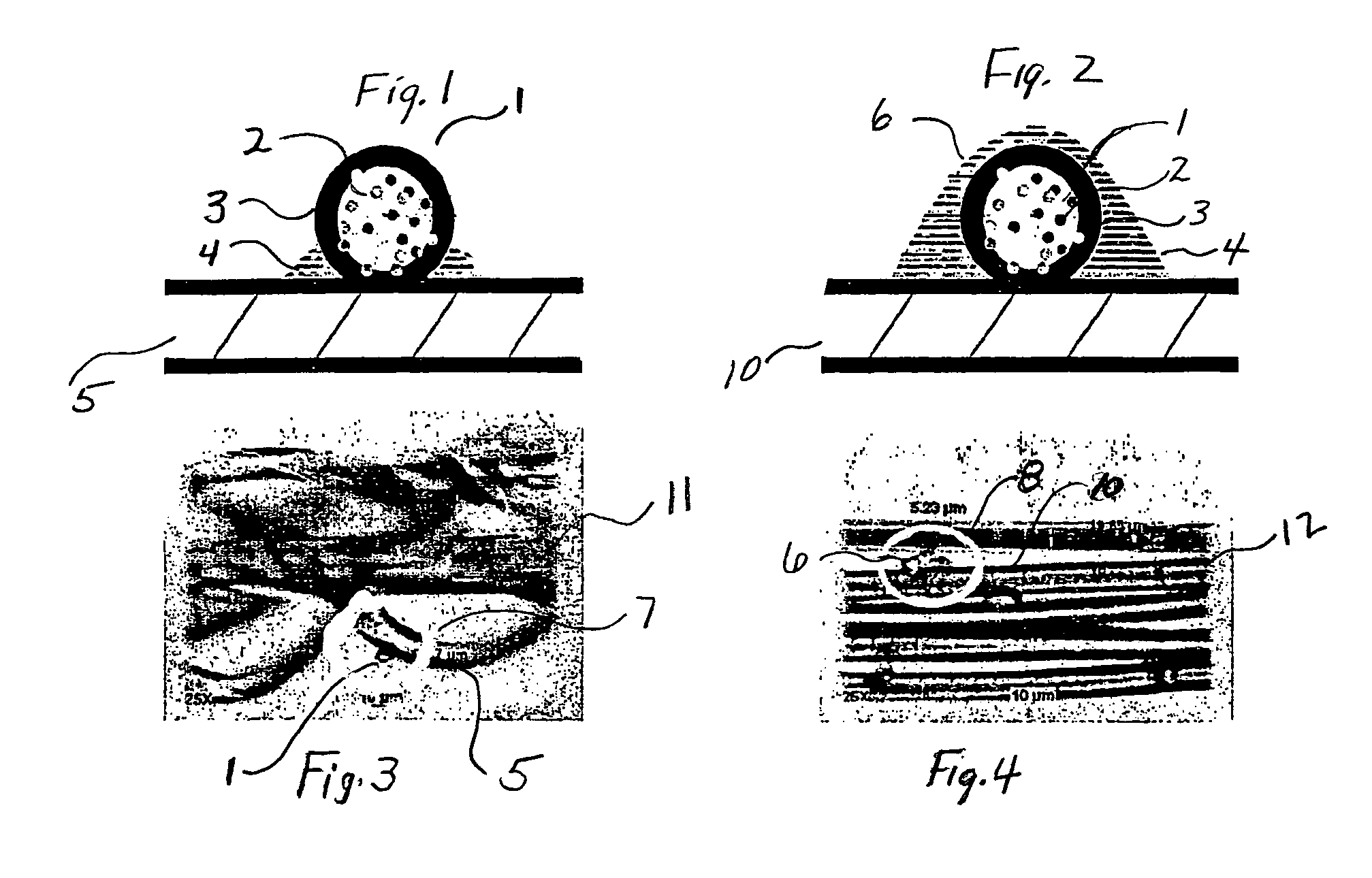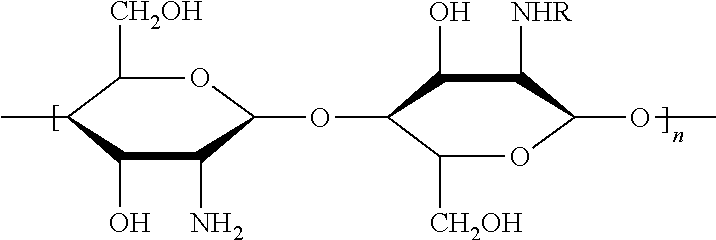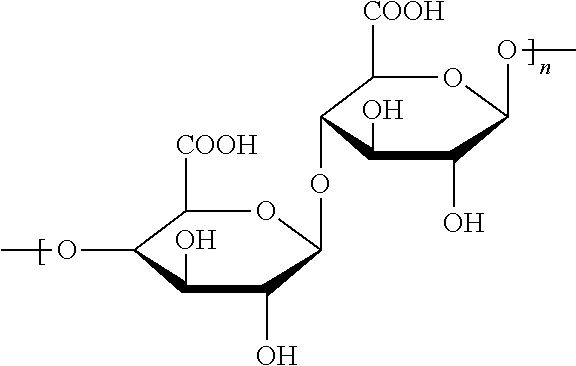Finished fibers and textiles
a technology of finished fibers and textile fabrics, applied in the field of textiles, can solve the problems of long-term unsatisfactory overall results, particularly unwanted loss of active components, and washed out
- Summary
- Abstract
- Description
- Claims
- Application Information
AI Technical Summary
Benefits of technology
Problems solved by technology
Method used
Image
Examples
production example h1
[0121]In a 500 ml three-necked flask equipped with a stirrer and reflux condenser, 3 g agar agar were dissolved in 200 ml water in boiling heat. First a homogeneous dispersion of 10 g glycerol and 2 g talcum in ad 100 g water and then a preparation of 25 g chitosan (Hydagen® DCMF, 1% by weight in glycolic acid, Cognis, Düsseldorf / FRG), 5 g squalane, 0.5 g Phenonip® (preservative mixture containing phenoxyethanol and parabens) and 0.5 g Polysorbate-20 (Tween® 20, ICI) in ad 100 g water were added to the mixture over a period of about 30 mins. with vigorous stirring. The matrix obtained was filtered, heated to 60° C. and added dropwise to a 0.5% by weight sodium alginate solution. An aqueous preparation containing 8% by weight microcapsules with a mean diameter of 1 mm was obtained after sieving. Finally, the microcapsules—based on their solids content—were mixed with polyethylene glycol (M=5,000) in a ratio by weight of 40:60.
production example h2
[0122]In a 500 ml three-necked flask equipped with a stirrer and reflux condenser, 3 g of agar agar were dissolved in 200 ml water in boiling heat. First a homogeneous dispersion of 10 g glycerol and 2 g talcum in ad 100 g water and then a preparation of 25 g chitosan (Hydagen® DCMF, 1% by weight in glycolic acid, Cognis, Düsseldorf / FRG), 5 g tocopherol, 0.5 g Phenonip® (preservative mixture containing phenoxyethanol and parabens) and 0.5 g Polysorbate-20 (Tween® 20, ICI) in ad 100 g water were added to the mixture over a period of about 30 mins. with vigorous stirring. The matrix obtained was filtered, heated to 50° C. and dispersed with vigorous stirring in 2.5 times its volume of paraffin oil cooled beforehand to 15° C. The dispersion was then washed with an aqueous solution containing 1% by weight sodium lauryl sulfate and 0.5% by weight sodium alginate and then repeatedly with a 0.5% by weight aqueous Phenonip solution, the oil phase being removed in the process. An aqueous pre...
production example h3
[0123]In a 500 ml three-necked flask equipped with a stirrer and reflux condenser, 3 g agar agar were dissolved in 200 ml water in boiling heat. First a homogeneous dispersion of 10 g glycerol and 2 g talcum in ad 100 g water and then a preparation of 25 g chitosan (Hydagen® DCMF, 1% by weight in glycolic acid, Cognis, Düsseldorf / FRG), 5 g caffeine, 0.5 g Phenonip® (preservative mixture containing phenoxyethanol and parabens) and 0.5 g Polysorbate-20 (Tween® 20, ICI) in ad 100 g water were added to the mixture over a period of about 30 mins. with vigorous stirring. The matrix obtained was filtered, heated to 60° C. and added dropwise to a 15% by weight solution of Sodium Laureth Sulfate. An aqueous preparation containing 9% by weight microcapsules with a mean diameter of 1 mm was obtained after sieving. Finally, the microcapsules—based on their solids content—were mixed with a melamine / formaldehyde condensate (M=8,000) in a ratio by weight of 50:50.
PUM
| Property | Measurement | Unit |
|---|---|---|
| diameter | aaaaa | aaaaa |
| diameter | aaaaa | aaaaa |
| diameter | aaaaa | aaaaa |
Abstract
Description
Claims
Application Information
 Login to View More
Login to View More - R&D
- Intellectual Property
- Life Sciences
- Materials
- Tech Scout
- Unparalleled Data Quality
- Higher Quality Content
- 60% Fewer Hallucinations
Browse by: Latest US Patents, China's latest patents, Technical Efficacy Thesaurus, Application Domain, Technology Topic, Popular Technical Reports.
© 2025 PatSnap. All rights reserved.Legal|Privacy policy|Modern Slavery Act Transparency Statement|Sitemap|About US| Contact US: help@patsnap.com



